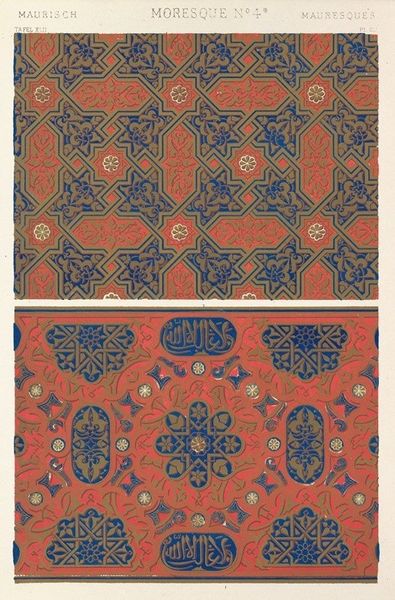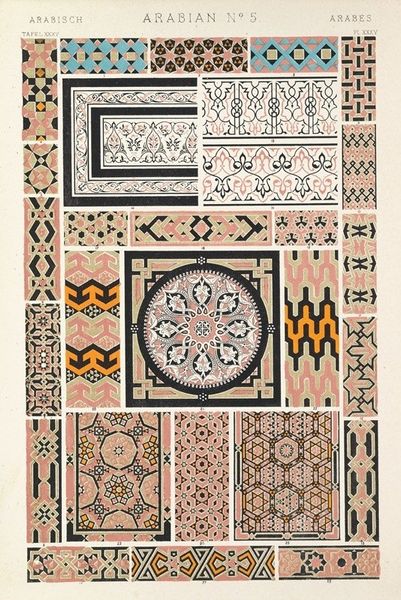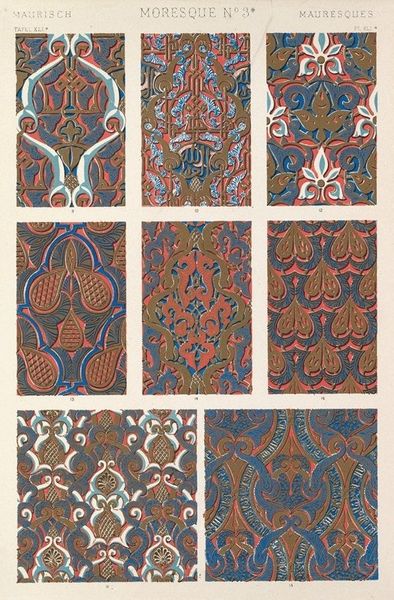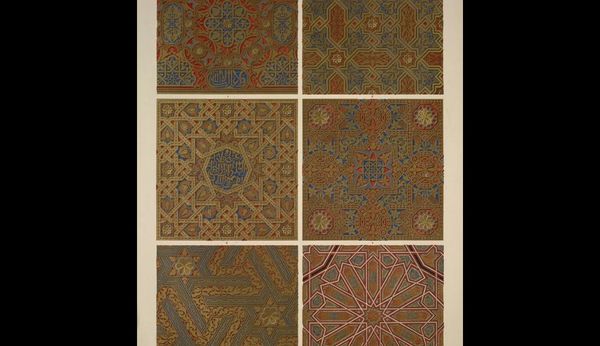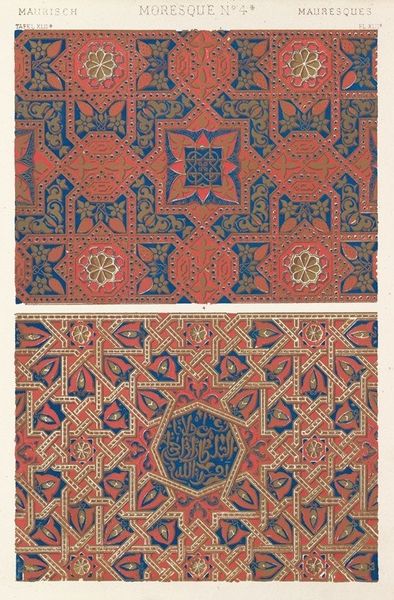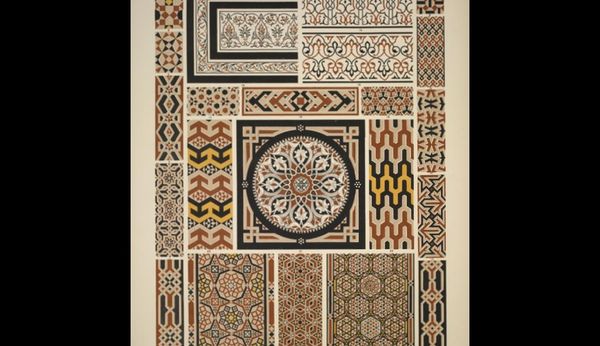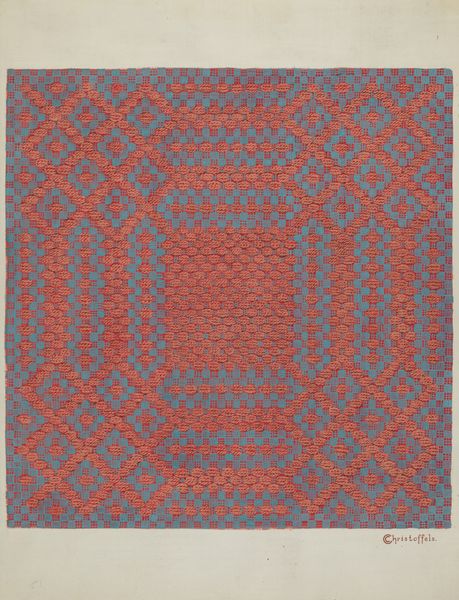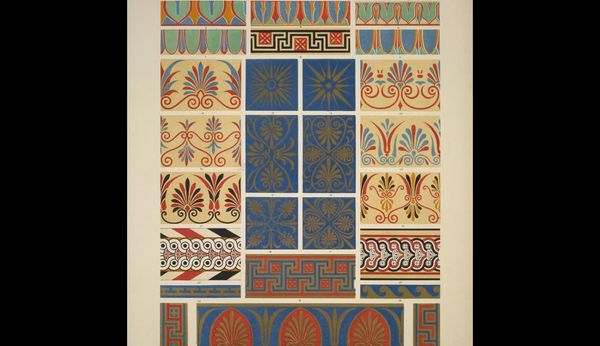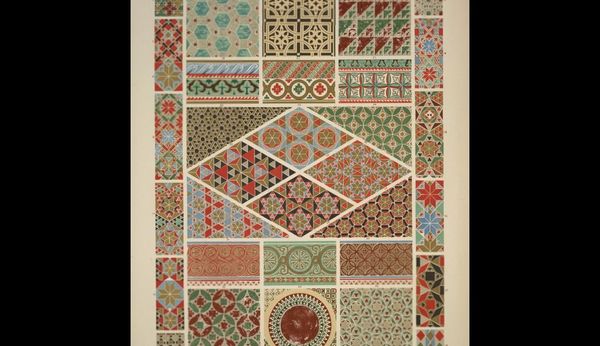
#
geometric pattern
#
geometric
#
islamic-art
#
decorative-art
Copyright: Public Domain: Artvee
Curator: This is Owen Jones’s "Moresque No. 4c," created in 1856 as part of his "Grammar of Ornament." What strikes you about it initially? Editor: Well, besides its immediately striking decorative beauty, I feel there's a tension between the ordered geometric design and the richness of its earthy colors. Curator: Precisely. Jones was deeply fascinated by the underlying principles of ornament across cultures. He believed that geometric patterns held symbolic weight, representing a universal visual language. He really aimed to reveal common threads across disparate civilizations. Editor: I'm thinking how Jones himself participates in a legacy of Western appropriation of "exotic" aesthetics. I mean, how did his access and perspective influence what he chose to represent, and more importantly, what might he have missed? Curator: That’s a crucial point to raise. Looking at these repeating patterns, specifically the geometric patterns used extensively in Islamic art, the repetition itself points to concepts like infinity, but it's rooted in a cultural tradition he wasn’t necessarily part of. Editor: Yes, it's a translation of sorts. What narratives are lost, altered, or even amplified by this shift in context? We need to understand these appropriations critically. After all, patterns like this were often integral parts of sociopolitical and religious identities of different societies, they carried their history with them. Curator: That reminds us that our understanding is continuously shaped by history and identity. Even ornament holds these complicated stories! Editor: Indeed. The beauty invites inquiry; let’s allow the dialogue about its past to echo in our present.
Comments
No comments
Be the first to comment and join the conversation on the ultimate creative platform.
